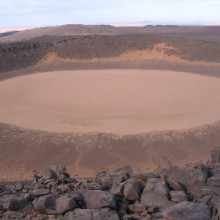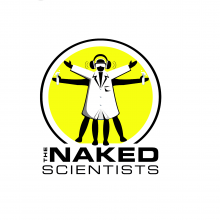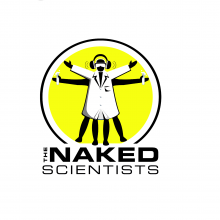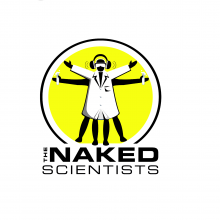In this show we will be talking about origins. Prof. Charles Cockell will be discussing how asteroid impact craters can tell us how life evolved on early Earth, Dr Armand Leroi explains how comparing the genomes of chimps and humans can teach us about human evolution, Dr Dana Mackenzie talks about the origin of the moon, and Dr Mike Hobson explains how our solar system formed in the first place.
In this episode
Virus Detecting Device Offers Instant Diagnosis
Scientists from Harvard University in the US have devised a detector which can rapidly identify viruses in patient samples. Charles Lieber and his team have found a way to link tiny silicon wires, called nanowires, to antibodies which can lock on to specific viruses. When the antibodies pick up a virus, or even part of a virus, the electrical conductance of the wires changes in a characteristic way for that particular virus. In other words different viruses produce their own specific electrical fingerprint which enables the machine to identify, immediately, which viruses are present in a sample collected from a patient. So far the technique has worked successfully on flu viruses, adenoviruses and a member of the mumps-virus family. The major benefit is the speed with which the machine can help a doctor reach a diagnosis. Present methods involve sending patient samples to a laboratory where they are painstakingly cultured, subjected to DNA analysis, or identified under the microscope, often with the aid of colour-coded antibodies. The whole process is very labour intensive and time consuming. But the new nanowire technique can detect several different infections simultaneously, again saving time, and patients also receive appropriate treatment for their infections more rapidly, including being isolated from other patients to whom they might pose an infection-risk.
Why Horses Are Built Like Pogo Sticks
I'm sure it's something you've pondered long and hard after wasting a few quid down at the bookies - what actually makes for a fast racehorse? Apparently around 80% of modern racehorses are descended from only one stallion - an 18th century nag who went through every race unbeaten. Two centuries later, jockeys and punters alike are still puzzling over what made him so good, and what makes a fast horse. There is also a slightly more fundamental question to be answered - how do horses remain upright when each of their legs is actually in the air for 80% of the time when they gallop. To answer these problems, scientists at the Royal Veterinary College have been making computer simulations of horses. They built the models using data gathered from real horses running about, and discovered that horses legs are, in fact, built like pogo sticks. They store energy in their muscles and tendon, like the spring in the pogo stick, then release it with every step to propel themselves upwards and forwards. Horses with stiffer legs apparently have trouble releasing this energy, and are slower. Also the team found that faster horses bring their legs forward more quickly than slowcoaches, but this is more difficult for large and long-legged horses, so leggier doesn't always mean faster. The team also studied portraits of Eclipse, the 18th century equine superstar and found, rather disappointingly, that he was almost exactly average. Being not too tall and not too short seems to be the perfect recipe for speed. So maybe that's something to watch out for next time the Grand National comes around.

- Did Life on Earth Begin in an Asteroid Crater ?
Did Life on Earth Begin in an Asteroid Crater ?
with Charles Cockell, Open University
Where did life on Earth begin? Charles Cockell joins us to explain why meteor and asteroid craters are a likely prospect...
Charles - I've been working up in the high Arctic looking at an asteroid crater formed about 30 million years ago. We have been looking at is the way life re-colonised this asteroid crater. On the early Earth 3.5 billion years ago when life first emerged, asteroid and comet impacts were much more frequent -1000 times more frequent. Asteroid and comet craters were a common habitat then. Looking at how microbes can re-colonise these impact craters gives an idea about how life might have survived on early Earth
Chris - Is your idea that destructive asteroids and comets could have spawned life?
Charles - Yes. People think of collisions as wholly destructive. But what we've found up in the Arctic is that asteroids and comets can forms little cracks in the rocks by shattering them, which essentially sets up little apartment complexes in the rocks where microbes can live. We found that rocks hit by asteroids and comets actually have more microbes in them than rocks that have not been hit. This is a very interesting example of the way in which impacts can create an impact for life rather than destroy it.
Chris - Phosphorus is relatively rare on earth, but is needed to make many biological molecules like DNA. Could a meteor that was relatively rich in phosphorus have slammed into the early earth and artificially elevated the amount of phosphorus available in that particular area?
Charles - Yes, this is one possibility. Asteroids and comets also could have been involved in the origin of life themselves because they deliver a huge amount of energy. The energy gets released into the rocks surrounding the impact crater, and it causes the ground to heat up for several thousand years, maybe even 10 thousand years. This heat can provide a source of energy for complex organic reactions to form. The great thing about asteroids and comets craters is that they are big holes in ground. Water tends to collect in holes. A hole in the ground, full of water and heat really is Darwin's proverbial warm little pond, the ideal place for complex organic molecules to form
Chris - Volcanoes produce a number of substances that are important precursors for many of the molecules involved in life. Do you think they could have been created under similar circumstances to the reactions in impact craters?
Charles - It's not just impact craters. Volcanoes could have done the same thing as well as hydrothermal vents under the ocean. Life may have been simultaneously occurring in several different places, and one place could have been the first place to give rise to an organism that eventually colonised the earth. Deep oceans, volcanoes, impact craters there's lots of energy, water interesting chemical reactions going on.
We know there are organics in space and early earth would have had them delivered. What is more controversial is whether micro-organisms were delivered from space. That doesn't really solve much because micro-organisms still would have to evolve from somewhere.
Life could have evolved on Mars. We know it had liquid water in its early history, which could have been conducive to early life. There is speculation that life on early Mars could have been transferred to Earth. W e might find evidence of this life on Earth. We know that Martian meteorites land on earth. And there are probably pieces of Earth landing on Mars. Some of those rocks might have contained micro-organisms.

The Genes That Make Us Human
with Dr Armand Leroi
Chris - What are the genes that make us human and separate us from, say, chimps ?
Armand - One of the deepest questions in biology, one that goes back to Aristotle. Namely, what exactly is the difference between humans and animals? Not very much. If you line up the human genome against our nearest relatives - the chimpanzees - you find that the differences are very few indeed.
Chris - What is the correct number?
Armand - The number changes as people investigate the genome in ever greater detail. In the '70s the number was about 98.5%. In the last year, the chimp genome has been sequenced and the human genome was sequenced in 2001. Now you can line them up side-by-side and count differences, and we are about 5% different.
Chris - What does lining up the genome tell us about where the humans came from and when the 2 split apart? Can we put a time point to when humans began to exist independently of the monkeys?
Armand - We still have a date of about 6 million years. The genome doesn't tell us that much directly about the date. You can use it to date divergences, but the best evidence still comes from the fossil record.
Chris - Is it fairly plausible that mankind originated in Africa about 3 million years ago?
Armand - That certainly looks the way it is from all the molecular and fossil evidence.
Chris - How are you using genetics to pinpoint what makes us human? What is the 5% that splits us away from chimps?
Armand - The problem is not that we're so similar, The problem is that we're so different. Our genomes are about 3 billion DNA building blocks long. If we are even only 1% different, that's 30 million nucleotides. That's a huge number of differences. Chris - How are you going to be able to pinpoint which of those differences are the important ones?
Armand - One way is by looking at human mutants, specifically at mutants that tell us about parts of our body that are most different from chimpanzees, and most specifically our brains.
Some work done by Jeff Woods in Leeds studied one of these mutations. There is a family of people with very small heads - microcephaly -heads 3 standard deviations smaller than mean. There is in Pakistan a city where microcephaly is very common.
This disorder is due to a recessive mutation, which means that to get this disorder you need 2 copies of the bad gene. The reason you actually get the disorder is because of the Pakistani habit of consanguinity - when people tend to marry their cousins. Since they are part of the same family, each cousin may have 1 copy of the bad gene, but their children might get 2 copies.
This gene controls the rate the brain actually grows. If you damage that gene by mutation you get a small head. You can take this gene and compare it to the homologous (similar) gene in chimpanzees. Although it's very similar, it's still much more different than most genes. In other words, this gene has been evolving fast over the past 2-3 million years.
Chris - Do you think it's just big brains that set us apart from chimps?
Armand - Big brains can't be the only things that make us special. Genes that are involved in the structure of the brain have been changing simultaneously. Another gene - Phoxp2 - when mutated in humans causes various kinds of linguistic and grammatical deficiencies. You have this gene in chimps, but when you compare it to humans, there are all sorts of differences. It has been evolving really fast, and the reason ithas been evolving is because it is one of the gene that gives us language
Yvonne (Caller): Dinosaurs were on the earth for 9 million years. I have never heard of any developing a very high intelligence. Why not?
Armand - The short answer is I don't know. It's always difficult when explaining unique historical events to give an account why one group has evolved high intellegence. There are trends towards bigger brains in dinosaurs. You find this especially in the big predator lineage.

Where Our Moon Came From
with Dana Mackenzie
Chris - Where did the moon come from?
Dana - The moon came from a collision between the earth and another planet about 4.5 billion years ago, about 50 million years after earth first formed. When the earth was in the process of forming, you still had a great amount of debris still in the same orbit as the earth. The planet that ran into the earth was the largest piece of this debris, about the size of Mars.
Chris - Why was such massive planet in the same orbit as Earth in our developing solar system?
Dana - For a period of 50 to100 million years, all the debris between Venus and Mars were collecting into planetessimals -small planets -and the y got bigger and bigger. Eventually you have the biggest chunk running into Earth.
This would have been trillion times larger than the impact that killed the dinosaurs. This collision was big enough to melt the surface of the earth. The Earth was polarised, and had rings like Saturn, but they were much denser than Saturn's rings so they condensed and formed the moon.
Chris - How do you know that's true?
Dana - There is evidence that the moon had a magma ocean that was completely covered by molten rock early in its history. If you have all this debris coalescing to form the moon, a lot of heat is released and that explains the magma ocean. This giant impact theory also explains other things. The moon is similar to the Earth's mantle -its surface- but the moon doesn't have an iron core like the Earth does. If you have the moon and Earth growing up in the same part of the solar system, why did we get all the iron? The giant impact would have stripped a lot of the Earth's exterior, which would have gone into orbit and formed the moon, but its interior was not affected.
Most of the moons of Saturn and Jupiter were likely formed by accretion, but the moon of Pluto -Charon -was probably formed the same way as our moon. It's very close in size to our moon, which is anomalously large -it's almost a double planet. The fact that there are two 'double planets' in our solar system suggests that their origin was very similar.
Chris - What does the moon do for us today?
Dana - It stabilises the Earth's axis which means climate on earth has been much steadier than the climate on Mars. We have had ice ages of course, but we would have had much more severe ice ages than if we had not had the moon. It's possible it would have impacted the development of life.

The Origin of The Solar System
with Dr Mike Hobson
Alex (telephone caller): What makes the Earth rotate on its axis?
Mike - The solar system formed about 5 billion years ago. When a star forms, material collapses into the centre to form a star. Around it, it forms a planetary disc. That disc fragments due to gravity. Bits coalesce which have more gravity, and you get planets and planetessimals forming. When the bits collapse to form the Earth, the Earth rotates because the disc was rotating already. If you have ever seen an ice skater with arms out, she spins quite slowly. When her arms are drawn in, she spin much faster. This is called conservation of angular momentum. Even though this disc was rotating, it began to spin in a similar way to when an ice skater draws her arms in.
Chris - Why do they all rotate in the same direction?
Mike - Because the disc was spinning around the sun in a particular direction, the rotation of the planets follow the direction of the disc. Uranus is different because it's on its side. It's thought that some interactions after the formation of Uranus moved it on its side - perhaps a big collision.
Kat - The solar system is surprisingly flat. Why?
Mike - A good picture of the solar system as its being form is like a fried egg with the yolk being the sun. The flat disc rotating around the sun fragmented and formed our planets.
Kat - Is the Milky Way - our galaxy - rotating as well?
Mike - Rotation is ubiquitous in astrophysics, and the reason is conservation of angular momentum. You have large clouds of gas that collapse under gravity to form either galaxies on very large scales or, within galaxies, stars or even planets. As the material falls in, there's no reason for its angular momentum to change because there is nothing to change its direction (called 'torque').

- Is aloe vera grown commercially to harvest, how big are the plants, how is is extracted ?
Is aloe vera grown commercially to harvest, how big are the plants, how is is extracted ?
To be honest you got me on that one. I don't know the precise mechanism. There are lots of trials with aloe vera when it's in skin cream or after sun, but the preparations are made in very different ways. There are lots of problems with evaluating the effects because you are not sure you are comparing like with like. The plant originated in North Africa, and has since been exported all over the world because people realised its beneficial effects. It has a substance called anthraquinone, an irritant to your gastrointestinal system that works as a laxative. It also has an aspirin-like agent called salicylic acid, which makes it a good pain-reliever. It also contains magnesium lactate, which blocks the synthesis of histamine. Histamine is one of the classes of substances that make your eyes itchy, that make your chest tight and wheezy and causes a skin wheal when you have an allergy. But because Aloe Vera binds water well, especially if you mix it with propylene glycol in skin cream, it keeps your skin nice and soft and smooth and damp. All these factors (except possibly the laxative effect) explain why it makes an ideal after-sun ointment.










Comments
Add a comment